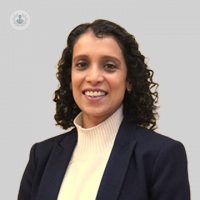I have a breast lump: should I be worried?
Written in association with:Breast lumps are a common concern that many individuals face, often leading to feelings of anxiety and uncertainty. While many lumps are benign (non-cancerous), it is essential to understand their potential causes, characteristics, and the importance of medical evaluation. Leading consultant menopause specialist Dr Ashlesha Dhairyawan provides a comprehensive overview to help you navigate this health issue with confidence and clarity.

What causes breast lumps?
Breast lumps can arise from various conditions. One common cause is fibrocystic breast changes, which are non-cancerous changes in the breast tissue that can cause lumps, pain, and tenderness. These changes are often linked to the menstrual cycle and hormonal fluctuations.
Another frequent cause is cysts, fluid-filled sacs within the breast that can feel like a lump. Cysts are typically benign and may fluctuate in size and tenderness with the menstrual cycle.
Fibroadenomas are another type of benign lump, often found in younger women. These lumps are solid, smooth, and easily movable under the skin.
However, breast lumps can sometimes be a sign of breast cancer, especially if they are hard, irregular in shape, and do not move easily under the skin. It is vital to remember that not all breast lumps are cancerous, but any new lump or change in the breast should be evaluated by a healthcare professional.
When should you see a doctor?
If you discover a lump in your breast, it is essential to monitor it and note any changes. However, you should seek medical advice if you notice a new lump or mass in the breast or underarm area, changes in the size, shape, or appearance of the breast, skin dimpling or puckering on the breast, nipple discharge (particularly if it is bloody or occurs without squeezing), nipple inversion (turning inward) or other changes in the nipple, or persistent pain in one spot of the breast that does not seem to be linked to the menstrual cycle. Prompt evaluation by a healthcare provider can help determine the nature of the lump and the appropriate course of action.
What can you expect during a medical examination?
When you visit a healthcare provider for a breast lump, the examination typically includes several steps. Initially, your doctor will take a detailed medical history, including any family history of breast cancer and any other symptoms you may have noticed.
A clinical breast examination will be performed, where the doctor carefully palpates (feels) the breasts and surrounding areas to assess the lump and check for any other abnormalities.
Depending on the findings, further tests may be recommended, such as a mammogram (an X-ray of the breast), ultrasound (imaging using sound waves), or MRI (magnetic resonance imaging) to get a clearer view of the lump. In some cases, a biopsy may be needed, where a small sample of tissue is taken from the lump and analysed under a microscope to check for cancer cells.
How are breast lumps treated?
The choice of treatment for a breast lump is dependent on the cause. Benign lumps, such as cysts or fibroadenomas, may not require treatment and might be monitored for any changes over time. In some cases, cysts can be drained if they are particularly large or painful.
If the lump is determined to be malignant (cancerous), a treatment plan will be developed based on the type and stage of cancer. Options include surgery, radiation therapy, chemotherapy, or hormone therapy.
Regular breast self-examinations and routine screenings, as recommended by your healthcare provider, are essential for early detection and effective management of breast lumps. If you have any concerns about breast lumps, do not hesitate to seek medical advice.
If you are concerned about a breast lump and would like to book a consultation with Dr Dhairyawan, do not hesitate to do so by visiting her Top Doctors profile today.


